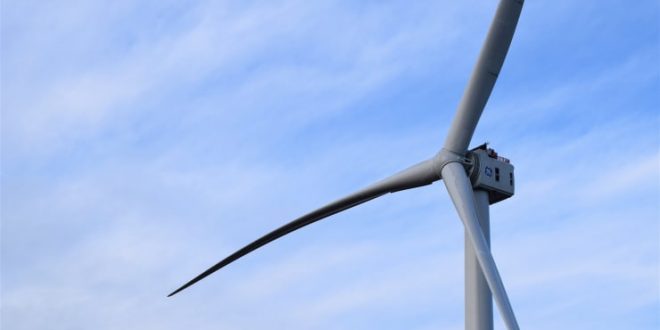As technology progresses, the wind turbines that companies use to generate renewable energy are growing in size and productivity.
Just last month, Siemens Gamesa Renewable Energy revealed it was developing a 14-megawatt giant that has 108-meter-long blades.
Another major player in the industry, GE Renewable Energy, has been working on the Haliade-X, which boasts a capacity of 12 MW, a height of 260 meters and a blade length of 107 meters.
While the size of turbines is increasing, the techniques used to build them are also beginning to change.
On Wednesday, GE Renewable Energy announced it was going to partner with LafargeHolcim and COBOD International to develop wind turbines that use 3D-printed concrete bases.
An initial 10-meter tall prototype using the technology was developed last October. If successful, the overall project could potentially have quite far-reaching implications.
In a statement, GE Renewable explained that wind turbine towers had traditionally been built in precast concrete or steel and typically been limited to a height of under 100 meters.
This, the company explained, was because the width of a turbine tower’s base could not exceed the 4.5 diameter that can be transported by road, without excessive additional costs.
The on-site printing of bases would, in theory, allow for bigger bases and therefore taller turbines. And the taller a turbine, the more energy it can produce, which could in turn reduce costs.
Concrete printing has advanced significantly over the last five years and we believe (it) … is getting closer to have real application in the industrial world, Matteo Bellucci, GE Renewable Energy’s Advanced Manufacturing Technology leader, said in a statement.
We are committed to taking full advantage of this technology both from the design flexibility it allows, as well as for the logistic simplification it enables on such massive components,Bellucci added.
Wooden towers?
The collaboration announced Wednesday comes in the same week that Swedish firm Modvion said it had received 69 million Swedish krona (around $7.36 million) in funding from the European Union’s EIC Accelerator program.
Modvion specializes in the development of wooden wind turbine towers. In April, it installed a 30-meter tower on an island near Gothenburg.
The EU funding is broken down into a 26 million krona grant and 43 million krona in capital investments that the European Investment Bank is guaranteeing.
Among other things, the EU grant will be used to build a development facility in the Gothenburg area, Modvion said in a statement. This is where the first tower on a commercial scale will be constructed – a tower of approximately 100 metres in height for Varberg Energi.
The use of wooden materials in construction is not new, but as concerns over the environment grow it’s increasingly seen as a sustainable alternative to more modern materials that may be energy intensive.
Modern timber buildings are being developed around the world, while Modvion has previously claimed that wooden wind towers could be constructed at a significantly lower cost than steel.
In addition, it has stated that the carbon dioxide absorbed by trees as they grow is stored in the wooden towers, which means that the wind turbines are climate neutral right from the start.
 Iran Energy News Oil, Gas, Petrochemical and Energy Field Specialized Channel
Iran Energy News Oil, Gas, Petrochemical and Energy Field Specialized Channel




